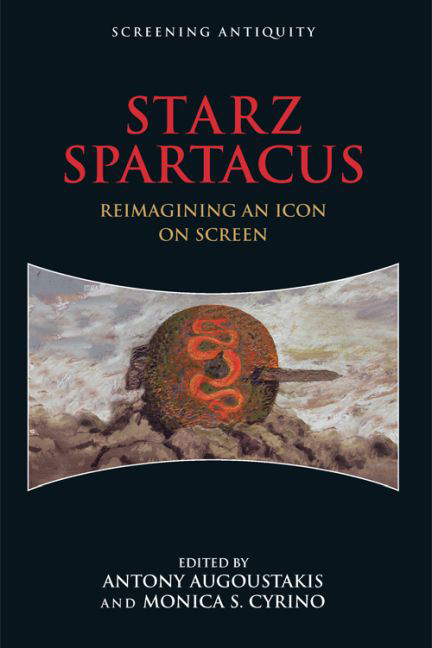Book contents
- Frontmatter
- Contents
- Series Editors' Preface
- Editors' Acknowledgments
- Contributors
- List of Illustrations
- Episode Listing
- Introduction: Reimagining a New Spartacus
- PART I HEROES AND HEROISM
- 1 Memories of Storied Heroes
- 2 From Kubrick's Political Icon to Television Sex Symbol
- 3 The Life and Death of Gannicus
- 4 A New Crassus as Roman Villain
- PART II SOCIAL SPACES
- PART III GENDER AND SEXUALITY
- PART IV SPECTACLE AND VIOLENCE
- Filmography
- Bibliography
- Index
1 - Memories of Storied Heroes
from PART I - HEROES AND HEROISM
Published online by Cambridge University Press: 27 April 2017
- Frontmatter
- Contents
- Series Editors' Preface
- Editors' Acknowledgments
- Contributors
- List of Illustrations
- Episode Listing
- Introduction: Reimagining a New Spartacus
- PART I HEROES AND HEROISM
- 1 Memories of Storied Heroes
- 2 From Kubrick's Political Icon to Television Sex Symbol
- 3 The Life and Death of Gannicus
- 4 A New Crassus as Roman Villain
- PART II SOCIAL SPACES
- PART III GENDER AND SEXUALITY
- PART IV SPECTACLE AND VIOLENCE
- Filmography
- Bibliography
- Index
Summary
The story of Spartacus, retold in many forms in culture high and low, is an “age-old” story of the struggle for freedom, a story of resistance to imperial oppression. STARZ Spartacus, however, presents a more complicated vision of the gladiatorial institution. Its Roman world is a system of profound constraint that operates upon all levels of society. This problematizes the notorious sexual and political license of Roman elites, just as it nuances the choices of the gladiators, who struggle to achieve agency even at the lowest levels of the hierarchy. Stripped of their past, the slaves of the gladiatorial ludus rebuild individual identity by redefining categories of value and connection, gender and family, becoming a band of brothers with their own loyalties and their own narratives of meaning, their own arena stories. The parables of past and current champions unfold in the Spartacus arenas to explain the society of the ludus and, at the same time, challenge that society, mislead the spectators, and put the lie to the Roman past.
A number of these narratives are embedded within ancient artifacts, as the producers create access to imperial “truths” through an archaeological pathway, tweaking methods of memorialization used in antiquity to reveal truths about the systems of power that bind the characters and channel their life choices. The sculpted portraits in the house of Batiatus represent the champions – the “gods” of the arena – the “storied heroes” whose narrowly expressed narratives both symbolize the family honor and shape its ambition. The long process of the series arc deconstructs the abusive power embedded in these representations, undercutting the ideals celebrated. Visualized counter- narratives also unpack these contrived arena identities, as when graffiti come to animated life to subvert the combat stories and play out the agonized choices driving the fights. The rudis of Gannicus, the wooden sword awarded for unusual gladiatorial success, likewise carries a “commemorative” inscription that is freighted with failure and loss.
In many ways, the producers’ choice reflects the complicated relationship with the past crafted by ancient monuments. Roman public spaces were filled with visual rhetoric that reinforced official claims about duty and triumph, with statues, reliefs, and large-scale paintings that commemorated the achievements of individuals and of the community as a whole.
- Type
- Chapter
- Information
- STARZ SpartacusReimagining an Icon on Screen, pp. 17 - 33Publisher: Edinburgh University PressPrint publication year: 2017



